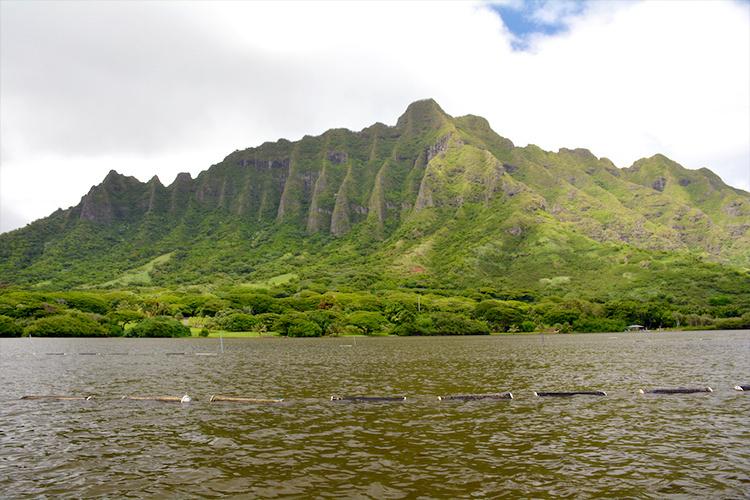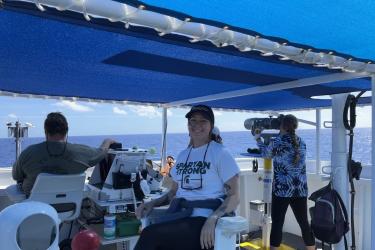My name is Nicole Makar, and I am a University of Hawai‘i at Mānoa STEM Fellow at the NOAA Fisheries Pacific Island Regional Office. Throughout my time in this program in the past year, I had the opportunity to work with a supportive team and meet many experts in the marine biology field. My project goal was to create educational materials for 4th–5th grade students to improve their understanding of aquaculture, both locally and on a global scale.
Developing A Storyboard To Build An Interactive Media Sequence
I was excited to teach students about aquaculture because it is something not many people know much about. This project required me to do extensive research on the topic and also learn more about elementary education to reach my audience. I wanted to design the activity so that it could be used as a standalone item for students or alongside existing activities.
The core of the project involved extensive research into a diverse topic, so I consulted a wide variety of sources, such as The Food and Agriculture Organization and “LOKO I‘A: A Manual on Hawaiian Fishpond Restoration and Management” by Graydon “Buddy” Keala. To better understand aquaculture locally, I connected with practitioners in the field, including a loko i‘a (traditional Hawaiian fishpond) expert working to restore He‘eia fishpond and another aquaculture expert who conducts research in feeds development, selective breeding, and offshore finfish and macroalgae culture.
After researching a variety of aquaculture systems, I developed a storyboard—a graphic organizer for interactive media sequences. The 32-page storyboard includes links to all photos and videos. I narrowed my project to seven main topics:
- Seafood
- Fishing methods
- Introduction to aquaculture
- Aquaculture in the Hawaiian Islands
- Finfish aquaculture
- Species in finfish aquaculture
- Innovations in aquaculture
Working In Adobe Captivate To Create An Interactive Learning Experience
Learning about elementary education was an important part of this fellowship, so I researched how I could create interactive materials for students. Having an interactive product is important because it makes learning about aquaculture more fun and engaging for students. The tool I used to create this learning experience was Adobe Captivate, an eLearning software that has interactive elements. New to this software, I spent a lot of time learning how to use it; once I figured it out, I was able to incorporate video, interactive maps, 360 footage, assessment tools, and more into the education materials. These materials teach students why seafood is important to different cultures, how aquaculture contributes to our food supply, and about innovations in aquaculture across history, among other learning objectives.
Connecting With Experts In Aquaculture Across The World
This fellowship provided me with the opportunity to connect with aquaculture experts across the world. Through it, I learned how to conduct an interview and about marine careers at NOAA.
I also had the opportunity to present my research and project at the NOAA Pacific Islands Region Intern Symposium. Throughout this process, creativity was important. It was a great learning experience to create materials that can help students learn about a new topic. It has taught me many life skills and I am grateful for this opportunity. It reignited my passion for marine biology and made me certain in my career choice.
Contact pir.education@noaa.gov if you are interested in piloting the activity with your 4–5th grade students.
Meet The Blogger
Nicole Makar is a junior at the University of Hawai‘i at Mānoa (UH) studying marine biology. She has been a UH STEM Fellow at the Pacific Islands Regional Office for the last year. She is passionate about ocean conservation and marine mammal medicine. She hopes to continue her studies after graduation at veterinary school where she will focus on aquatic mammal medicine.





